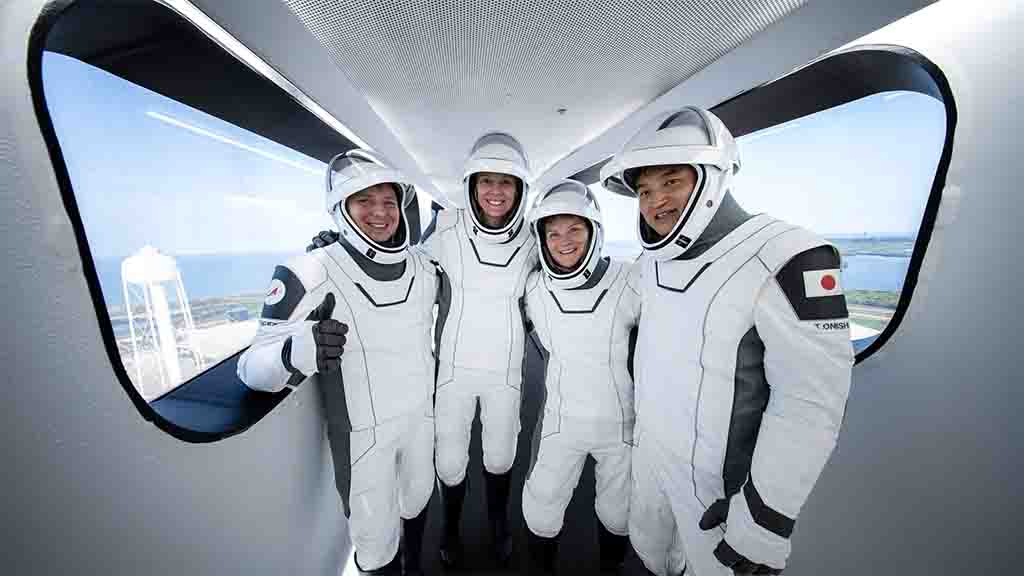🚀 NASA’s SpaceX Crew-10 Launches to ISS: A New Era of Spaceflight
🚀 Quick Summary
- NASA and SpaceX successfully launched Crew-10 to the International Space Station (ISS).
- The mission carries four astronauts for a six-month stay aboard the ISS.
- Crew-10 will conduct scientific research, spacewalks, and technology tests.
- The launch marks another milestone in commercial spaceflight and deep-space exploration.
🌍 A Historic Mission: Crew-10 Takes Flight
NASA’s SpaceX Crew-10 mission has officially launched, sending four astronauts to the International Space Station (ISS) for a six-month mission. This latest step in NASA’s Commercial Crew Program continues the partnership with SpaceX, advancing space research, technology testing, and deep-space exploration goals.
The Falcon 9 rocket lifted off from Kennedy Space Center in Florida, propelling the Crew Dragon spacecraft into orbit. Shortly after launch, the first stage of the rocket successfully landed, showcasing SpaceX’s reusability technology.
👨🚀 Who’s Aboard Crew-10?
The Crew-10 astronauts represent a diverse team of experienced space travelers and first-time flyers:
🌟 Commander [Astronaut Name] – Veteran astronaut leading the mission.
🌟 Pilot [Astronaut Name] – SpaceX test pilot and mission specialist.
🌟 Mission Specialist [Astronaut Name] – Conducting microgravity experiments.
🌟 Mission Specialist [Astronaut Name] – Focused on space technology research.
These astronauts will live and work aboard the ISS, conducting over 200 experiments in areas such as biotechnology, Earth observation, and robotics.
🔬 Science & Research Goals
Crew-10’s six-month mission will support a wide range of cutting-edge experiments, including:
🧬 Human health studies – Understanding the effects of microgravity on the body.
🌍 Climate & Earth research – Monitoring changes in the environment from space.
🤖 Robotics & AI testing – Improving automation for future deep-space missions.
🛰️ Space technology experiments – Developing new tools for lunar and Mars exploration.
These studies will not only benefit life on Earth but also prepare NASA for future Artemis missions to the Moon and beyond.
🚀 The Role of Commercial Spaceflight
The Crew-10 mission highlights the growing role of commercial partnerships in space exploration. SpaceX’s Crew Dragon spacecraft has become a reliable method of transporting astronauts to the ISS, reducing reliance on foreign space agencies and increasing the frequency of space missions.
NASA’s collaboration with private companies like SpaceX ensures cost-effective space access, opening doors for future missions to the Moon, Mars, and deep space.
🛰️ What’s Next for Crew-10?
Once they arrive at the ISS, Crew-10 will:
✅ Dock with the station and meet the current ISS crew.
✅ Begin a six-month research schedule with various experiments.
✅ Perform spacewalks for station maintenance and upgrades.
✅ Prepare for Crew-9’s return after their mission ends.
After their stay, the Crew-10 astronauts will return to Earth in the Crew Dragon spacecraft, landing safely in the ocean near Florida.
📢 Final Thoughts: The Future of Space Exploration
NASA and SpaceX continue to redefine human spaceflight, bringing us closer to a future where space travel is routine and accessible. Crew-10’s mission plays a crucial role in advancing science, preparing for Artemis lunar missions, and paving the way for Mars exploration.
🌟 What excites you most about the Crew-10 mission? Drop your thoughts in the comments!
















0 comments:
Post a Comment